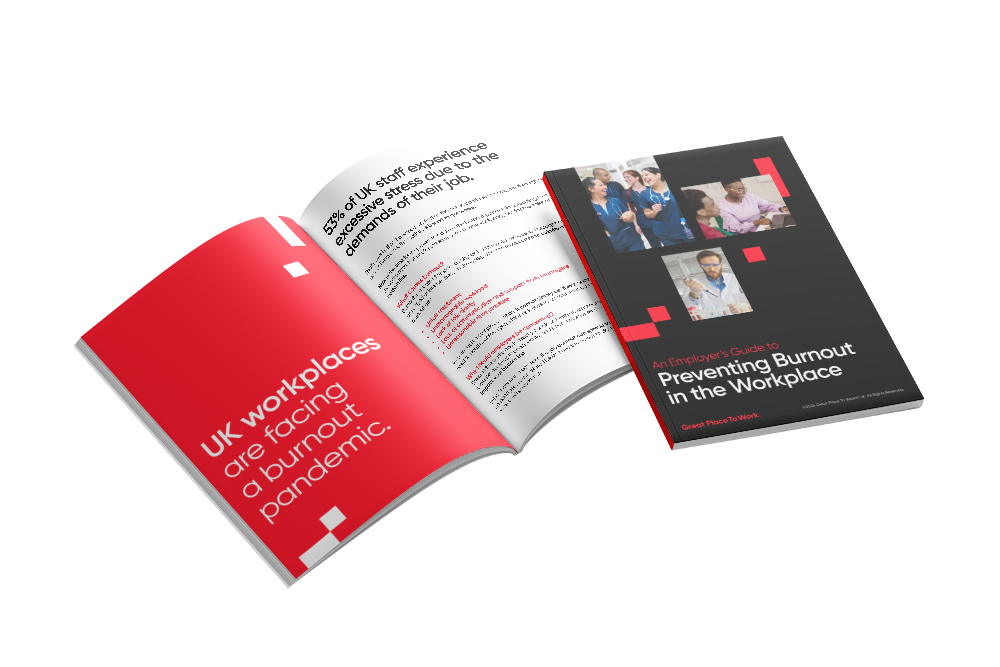The sun is out, airports are full, and half the emails you send are greeted by an out of office – it’s officially holiday season.
After two years of stress and travel restrictions, we should all be itching to take time off work, whether it’s to head to tropical climes or just sunbathe in the garden. But annual leave is a tricky beast. In fact, 40% of UK employees report taking a maximum of just half their annual leave allowance. This is despite 59% saying that over 28 days of leave in their benefits package is important to them.
So, are we just a nation of workaholics? Or is there another reason we’re not taking our full allowance?
The Guilt Factor
Taking annual leave should be a positive thing, both on an individual and organisational level. It provides a huge boost to mental wellbeing by helping them rest and recharge, spend time with their loved ones and have some fun! This means they come back to work feeling more inspired, motivated and productive.
But many businesses and their staff don’t see it that way. Annual leave can be a source of guilt, with employees feeling they should be at work, and organisations heightening this feeling – or at least not doing anything to alleviate it. This is a huge factor in those low annual leave figures, and also leads to people feeling the need to work on their time off.
Want to find out what your employees really think of your annual leave policies? Easily administer an employee survey to get actionable insights, with Emprising™️.
How ‘Out of Office’ are you Really?
In a poll conducted on our LinkedIn, we found that 37% of respondents still checked their emails in their time off – and another study reported that just half of the employees polled said they could completely ‘check out.’
Everyone will feel comfortable with different levels of engagement when they’re OOO, but taking proper time to switch off from work completely is incredibly important. Even if it’s just for a percentage of your time off, we highly encourage you to take a step back from everything work related – including your emails. Not only will you feel better for it, it’s a great preventative step for avoiding burnout in the long run.
Encouraging Employees to Switch Off
So, how can businesses encourage their staff to switch off completely? It starts at an organisational level. Building a culture where taking annual leave - and being fully out of office when you do - is not only acceptable, but encouraged, is key.
Having a robust and reasonably flexible leave policy is a great first step. Letting staff know that you want them to take time off – in company wide meetings and through line managers – is important too. You want everyone to be on the same page.
Finally, it’s about leading by example. It’s all very well talking the talk, but if managers aren’t walking the walk, other staff may feel they can’t really take advantage of their time off.
Annual Leave, the Great Place to Work-Certified™ way
If you’re looking for inspiration, here’s a couple of ideas from two of the UK’s Best Workplaces™.
.png?width=226&name=TEMPLATE_E-Shot%20banners%20(9).png) At Xledger Ltd, employees who want to take holiday between March and August are gifted an additional day off for every five consecutive days’ holiday taken.
At Xledger Ltd, employees who want to take holiday between March and August are gifted an additional day off for every five consecutive days’ holiday taken.
.png?width=239&name=TEMPLATE_E-Shot%20banners%20(10).png)
And Synergy Vision’s ‘Duvet Days’ showcase the company's attitude to annual leave.
“This is short notice unscheduled annual leave that can be taken twice a year, allowing employees to take a break if they need one,” says the company. “Managers do not ask why they are taking the day off but give them the space to do whatever they see fit; stay in and watch Netflix or head to the beach.”
Clearly this pays off, with one employee quoting “great flexibility in taking annual leave days” as a factor in making Synergy Vision a great place to work.
Get in touch to find out how Great Place to Work®️ can help you gain insights into your employee experience and improve your workplace culture.










